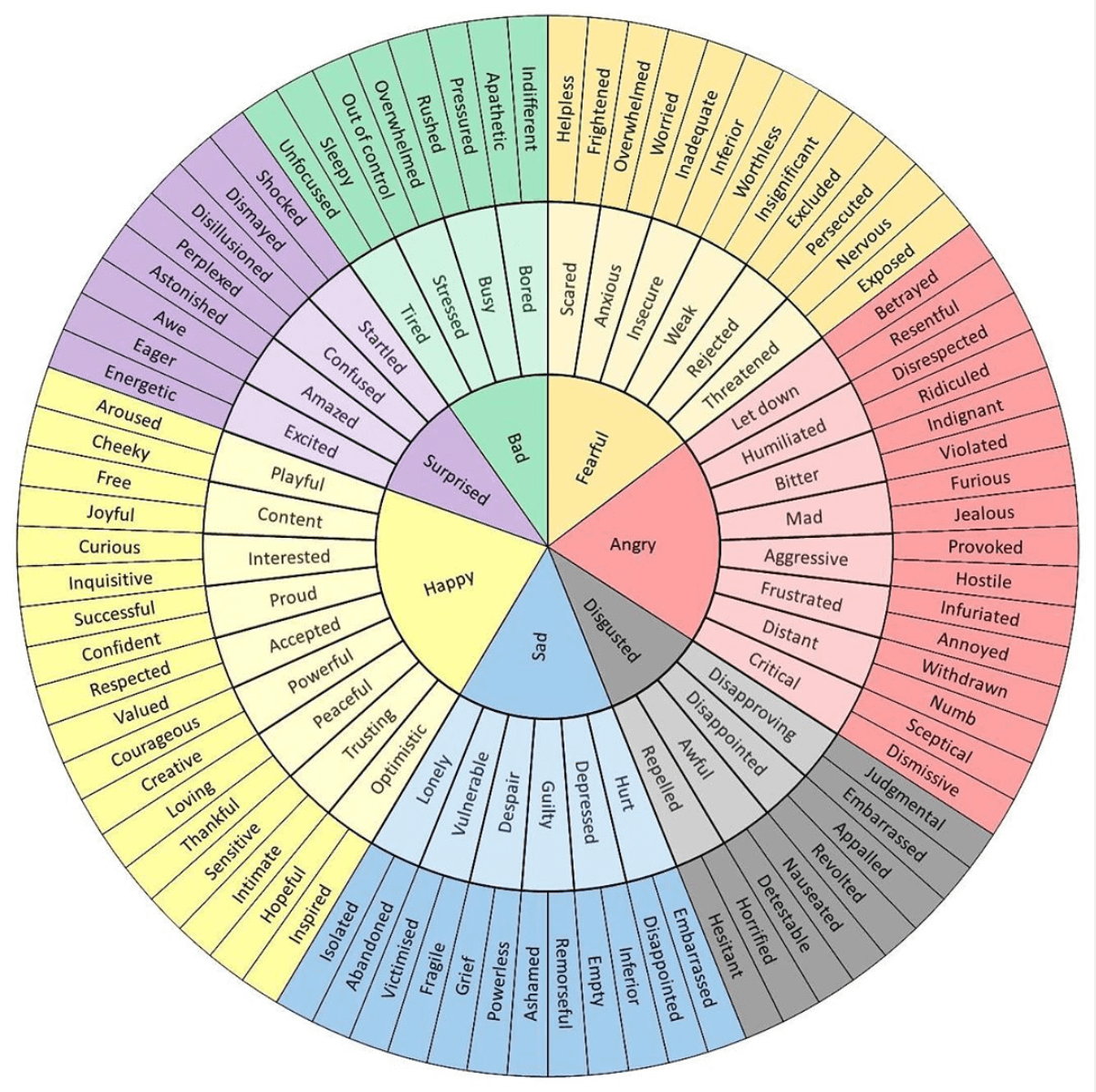A feelings wheel is a powerful tool that can help individuals name and understand their emotions. It provides a visual representation of different emotions and helps people identify and articulate how they are feeling. By using a feelings wheel, individuals can gain insight into their emotions and develop greater emotional intelligence.
Using a Feelings Wheel
 To use a feelings wheel, start by familiarizing yourself with the different emotions depicted on the wheel. Each emotion is typically represented by a different color or shade. As you encounter different situations and experiences, refer to the wheel to identify and name the emotions you are experiencing.
To use a feelings wheel, start by familiarizing yourself with the different emotions depicted on the wheel. Each emotion is typically represented by a different color or shade. As you encounter different situations and experiences, refer to the wheel to identify and name the emotions you are experiencing.
The feelings wheel acts as a guide, helping individuals distinguish between primary emotions and more nuanced feelings. For example, instead of simply feeling “upset,” the wheel can help identify whether the emotion is closer to frustration, disappointment, or anger.
Once you have identified the specific emotion you are feeling, take the time to reflect on why you might be experiencing that emotion. Are there any triggers or underlying reasons? Understanding the why behind an emotion can provide valuable insights into yourself and your emotional responses.
Benefits of Using a Feelings Wheel
 There are several benefits to using a feelings wheel. First and foremost, it helps individuals develop emotional awareness. By being able to name and identify their emotions, individuals can better understand themselves and their emotional responses. This self-awareness can lead to improved self-care and overall well-being.
There are several benefits to using a feelings wheel. First and foremost, it helps individuals develop emotional awareness. By being able to name and identify their emotions, individuals can better understand themselves and their emotional responses. This self-awareness can lead to improved self-care and overall well-being.
In addition, a feelings wheel can help individuals navigate difficult emotions. It provides a framework for understanding complex feelings and can be particularly useful when dealing with overwhelming or confusing emotions. By breaking down a complex feeling into its components, individuals can gain a clearer understanding of what they are experiencing.
Furthermore, using a feelings wheel can enhance communication and relationships. By being able to express and articulate their emotions, individuals can effectively communicate their needs and experiences to others. This can lead to improved relationships and a greater sense of connection.
Practical Tips for Using a Feelings Wheel
 Here are some practical tips for using a feelings wheel effectively:
Here are some practical tips for using a feelings wheel effectively:
1. Take the time to familiarize yourself with the emotions depicted on the wheel. Understanding the range of emotions can help you better identify and name what you are feeling.
2. Use the feelings wheel as a starting point for introspection. Reflect on why you might be experiencing a particular emotion and consider any underlying factors.
3. Keep a journal of your emotional experiences. Write down which emotions you are feeling and any relevant details or observations. This can help you track patterns and gain deeper insights into your emotional landscape.
4. Share your emotions with trusted friends or loved ones. Verbalizing your feelings can help validate and process them. It can also lead to deeper conversations and a stronger support system.
Remember, the feelings wheel is a tool to guide and support your emotional journey. It is not meant to define or limit your emotional experiences. Emotions are complex and multi-faceted, and the wheel is just one way to explore and understand them.
So next time you find yourself grappling with a whirlwind of emotions, consider referring to a feelings wheel. It can help bring clarity and insight to your emotional landscape, leading to greater self-awareness and well-being.
Sources:
Hope 4 Hurting, Fairygodboss, Practical Psychology, Hoolst, Pinterest, Adventure in a Box, Defend Innocence, Tristan Website